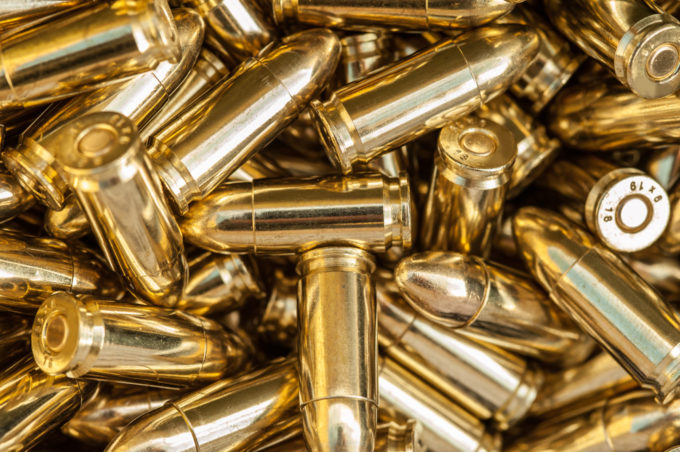
This is the second post in a series of blogs about the proposed changes to USML Categories I, II and III. Please check back for further articles in this series. For more information about these changes, and the movement of items from ITAR to EAR, check out Part 1 in our series and read the latest firearms Export Control Reform updates.
Part 2: Where are my ITAR exemptions?
Let’s project forward and say the transition of specified products in U.S. Munitions List (USML) Categories I, II and III has occurred. You have spare parts in these categories that are ready for export. Can you use the same ITAR exemption that you’ve been using for years? The short answer is – no! If the products are no longer controlled by the ITAR, then the use of ITAR exemptions is not permissible.
There are some potential circumstance where these exemptions could still apply. For example:
- You received a part for repair using an exemption during the period of time the part was under ITAR control. You may continue to use the exemption authority under which the part was imported for re-export, or you can also look to see if any EAR authorizations may apply.
- If an item, which has transitioned to the EAR, was exported to Canada under the authority of §126.5, the exemption may continue to be utilized as the export authority for the return of the item to the U.S.
No ITAR exemptions? Now what?
The EAR will allow for the use of certain exceptions for the export, temporary import or temporary export of defense articles previously classified as ITAR controlled under USML Categories I, II and III. Those exceptions and the circumstance under which they may be utilized are:
Shipments of Limited Value (LVS):
- Complete firearms which are now under the jurisdiction of the EAR would not be eligible for License Exception LVS.
- Firearms “parts,” “components,” “accessories,” and “attachments” controlled under the EAR, other than receivers (frames), and complete breech mechanisms, including castings, forgings or stampings thereof, would be eligible for License Exception LVS, with a limit of $500 (based on the actual selling price or fair market value) per shipment.
- Receivers (frames), and complete breech mechanisms, including castings, forgings or stampings thereof, would be eligible for License Exception LVS if the ultimate destination is Canada.
- Guns and armament manufactured between 1890 and 1919 and for military flame throwers with an effective range less than 20 meters would be eligible for License Exception LVS, with a limit of $500 net value per shipment.
It’s worth noting that ammunition which transitioned from ITAR to EAR control would not be eligible for License Exception LVS. However, ammunition parts and components would be eligible with a limit of $100 net value per shipment.
Just as with “series 600” commodities – test, inspection and production equipment controlled under the EAR for firearms, guns and armament and ammunition/ordnance would be eligible for License Exception LVS with a limit of $3,000 net value per shipment.
Baggage Exception (BAG):
- United States citizens and permanent resident aliens leaving the United States temporarily may use the BAG exception to take up to three firearms controlled by proposed ECCN 0A501 and up to 1,000 rounds of ammunition for such firearms controlled by the EAR for personal use while abroad.
- Nonresident aliens leaving the United States may use the BAG exception to take firearms, “accessories,” “attachments,” “components,” “parts,” and ammunition controlled by the EAR that they lawfully brought into the United States.
Strategic Trade Authorization Exception (STA):
- Firearms controlled under ECCN 0A501 and most “parts,” “components,” “accessories,” and “attachments” controlled under the EAR are ineligible for License Exception STA.
- Only those “parts,” “components,” “accessories,” and “attachments” which are “specially designed” for EAR, or ITAR-controlled firearms that are not specifically listed either on the CCL or USML, will qualify for export under License Exception STA.
License Exception GOV:
- For governments, international organizations, international inspections under the Chemical Weapons Convention, and the International Space Station, License Exception GOV would authorize the export of non-automatic and semi-automatic firearms and “parts” and “components” controlled by the EAR (with the limitations that currently exist in § 740.11) to U.S. government employees, to/for the use of servicemen’s club (for service members or civilian employees), for/on behalf of the U.S. Government (including contractors, government employees, their families and household employees).
Additional exceptions may be available. Part 740 of the EAR should be consulted. If your proposed transaction qualifies for the use of an exception, remember to review the corresponding section of the EAR and determine what requirements and documentation must be complied with.
If you need help understanding these changes and how they impact your business, schedule a no-charge consultation with one of our team members today.
Jim McShane is a Sr. Consultant, Trade Compliance for Export Solutions -- a full-service consulting firm specializing in ITAR and EAR regulations.
